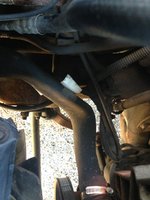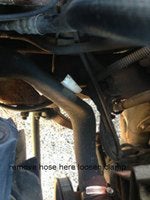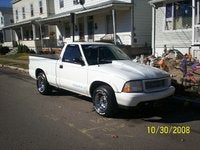Engine temperature fluctuation (4 cyl)
Asked by mmoo7114 Jan 07, 2015 at 08:39 AM about the 1995 GMC Sonoma 2 Dr SLS Standard Cab LB
Question type: Maintenance & Repair
Started off my commute this morning in a cold Floridian 50 degrees F and a cold
engine. Ten minutes into my commute my engine temp gauge showed a 250 degree F
reading.The temperature fluctuated between 230 and 255 for about 10 minutes after I
noticed it. 30 minutes into my commute my engine temp was fluctuating only between
210 and 215 and that only seemed dependent on RPM.
The normal reading on the Sonoma is a comfortable 210. The overheating reading is at
255-260 so i was concerned.
Details: I didn't put antifreeze in my radiator the last time I filled it (last summer). I felt
as though a possible answer would be that last night in the cold a portion of my
radiator froze. I have yet to go back outside and check though. I have yet to have a
gauge go bad so I feel as though it is more than a coincidence that on the first cold
night in FL this happens.
7 Answers
Being that it's a '95, I would drain the water out, put in a new thermostat, and refill with anti-freeze. Water will not freeze at 50 degrees. Must be a good constant 32 degrees. It sounds like your thermostat is on it's way out.
Reelin68 is spot-on. But engine coolant aka antifreeze does more than protect from freezing, it lubricates and prevents rust ..but when he says re-fill with antifreeze, not full strength. Buy either pre-diluted or use about a 60/40 mix of distilled water and coolant (60 being water)
Upon my inspection once my radiator cooled off I was unable to remove my radiator cap. I removed the tube that goes from my reservoir to my radiator below the radiator cap to alleviate pressure but that did not help. I inspected what I could externally and noticed a partially collapsed hose approximately 2/3 inch diameter that goes from the bottom of my radiator to the bottom of my engine block. should this hose be collapsed? Please advise.
Absolutely NOT should it collapse like that. That is caused by vacuum inside the hose. I am not an expert on GM/GMC vehicles but I can still say that with certainty ...but is that a typo on the size of the hose? Only less than 1 inch diameter? That is an excellent image but perspectives can be deceiving looking at it. If it's the lower radiator hose it will be about 1 1/2 inch, and can be replaced with a hose with a spring inside to prevent this
After re-reading your last post, unable to remove cap? Push down HARD on cap and turn counter-clockwise, even use big channel-locks pliers if need be. You need a new cap. I enlarged the picture..click it
I am at work and don't have my tools here. I was planning on grabbing some channel locks from the maintenance dept at lunch. AND YES it was a typo, I meant to relay that that hose has a two to three inch diameter not a 2/3" diameter. My bad.
Where is the engine temp gauge located?



